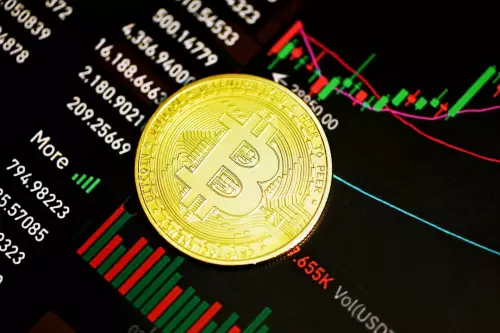 |
|
 |
|
 |
|
 |
|
 |
|
 |
|
 |
|
 |
|
 |
|
 |
|
 |
|
 |
|
 |
|
 |
|
 |
|
Cryptocurrency News Articles
Polkadot's pUSD: A Native Stablecoin to Unleash DeFi Potential
Sep 29, 2025 at 04:30 am
Polkadot is on the verge of launching pUSD, a DOT-backed stablecoin, to boost DeFi liquidity and reduce reliance on external stablecoins, potentially revolutionizing its ecosystem.

Polkadot's pUSD: A Native Stablecoin to Unleash DeFi Potential
Polkadot is making waves with its proposal to launch pUSD, a stablecoin fully backed by DOT tokens. This move aims to boost DeFi liquidity, reduce reliance on stablecoins like USDT and USDC, and foster economic resilience within the Polkadot ecosystem. Is pUSD the key to unlocking Polkadot's full potential?
The Dawn of pUSD: A DOT-Collateralized Stablecoin
Polkadot is gearing up to launch pUSD, its first native stablecoin, designed to be fully backed by DOT tokens. This initiative is gaining traction, with a recent proposal highlighting its potential to boost DeFi growth and reduce dependence on external stablecoins. The proposed pUSD is designed as an over-collateralized debt token, allowing users to borrow against their DOT holdings without sacrificing them. This mechanism aims to bring more stability to traders and liquidity providers, while also promoting developer activity.
Why pUSD Matters
The introduction of pUSD is a strategic move by Polkadot to foster self-sufficiency and economic resilience. By establishing pUSD, Polkadot aims to make the conversion between OpenGov DOT-stablecoin and pUSD much more convenient, promoting self-sufficiency. This stablecoin may also be included in Polkadot’s Treasury for payments, reducing the need for maintaining separate reserves in external stablecoins. Over time, the Treasury could even use pUSD as an incentive for staking, potentially eliminating DOT inflation and replacing it with stable payouts.
Addressing Liquidity Challenges
One of the key drivers behind pUSD is the need to address liquidity challenges within the Polkadot ecosystem. Currently, Polkadot has less than $100 million in stablecoin liquidity, significantly lower than chains like Ethereum and Solana. This lack of liquidity has hindered the network’s DeFi growth and discouraged developers. pUSD aims to solve this by providing a stable medium of exchange, supporting developers building DeFi apps, and enabling holders to borrow against DOT without liquidation.
Community and Governance
The pUSD proposal has garnered significant community support, with voting support nearing the approval threshold. Polkadot co-founder Gavin Wood has also expressed his support, calling the stablecoin “strategically essential” to the future of the network. The rollout of pUSD will be guided by OpenGov tokenholders, reflecting decentralized consensus and showcasing Polkadot’s community-driven model. This democratic process aims to increase legitimacy and ensure that the stablecoin aligns with the needs of the Polkadot community.
A Broader Industry Trend
Polkadot’s move towards a native stablecoin is part of a broader industry trend. Several competing blockchains have created similar assets to build internal economies and mitigate third-party risk. Others point to Circle’s USDC and Tether’s USDT as becoming potential risk factors because they are subject to external governance and regulatory interventions. By de-pegging, the network takes a step towards reducing its reliance on outside stablecoins and enabling greater autonomy and liquidity.
Potential Concerns and Controversies
While the proposal has strong support, it has also sparked some controversy. Observers warn against a system-level stablecoin, raising concerns about potential risks. However, proponents argue that the benefits of pUSD, such as increased liquidity and reduced reliance on external stablecoins, outweigh the risks. The debate highlights the complexities of introducing a native stablecoin and the need for careful consideration of potential consequences.
The Future of pUSD
If approved, pUSD would become an integral part of the Asset Hub of Polkadot. It is expected to attract traders who need a stable medium of exchange, support developers building DeFi apps, and enable holders to borrow against DOT without liquidation. The success of pUSD will depend on its ability to maintain stability, foster community trust, and drive DeFi growth within the Polkadot ecosystem.
So, will pUSD be the game-changer Polkadot needs? Only time will tell, but one thing is for sure: the future of DeFi on Polkadot just got a whole lot more interesting. Keep your eyes peeled, folks – this could be the start of something big!
Disclaimer:info@kdj.com
The information provided is not trading advice. kdj.com does not assume any responsibility for any investments made based on the information provided in this article. Cryptocurrencies are highly volatile and it is highly recommended that you invest with caution after thorough research!
If you believe that the content used on this website infringes your copyright, please contact us immediately (info@kdj.com) and we will delete it promptly.






























































